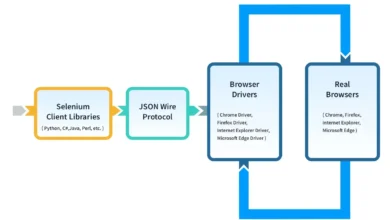The Comprehensive Guide to Pigging Systems in Pipeline Operations

Introduction: Pigging systems have revolutionized the way pipelines are managed, maintained, and operated across various industries. These sophisticated systems, often referred to as pigging technology, employ specially designed devices called pigs to perform a multitude of tasks within pipelines, ranging from cleaning and inspection to product separation and maintenance. In this extensive guide, we delve deep into the world of pigging systems, exploring their types, components, applications, benefits, challenges, and the latest technological advancements shaping the future of pipeline operations.
Understanding Pigging Systems
- Definition and Functionality:
- A pigging system is a pipeline maintenance technology that uses pigs—devices inserted into pipelines—to perform various operations.
- The primary functions of pigging systems include cleaning, inspection, batching, product separation, and maintenance.
- Components of Pigging Systems:
- Pigs: The central component, pigs come in various types such as cleaning pigs, inspection pigs, batching pigs, and specialty pigs.
- Launchers and Receivers: These are the entry and exit points for pigs into and out of the pipeline.
- Valves and Fittings: Control the flow of pigs and products within the pipeline.
- Pigging Control Unit: Manages and monitors pigging operations, including pig launching, tracking, and retrieval.
Types of Pigging Systems
- Mechanical Pigging Systems:
- Utilize physical pigs (foam, brush, scraper) for cleaning, inspection, and maintenance tasks.
- Ideal for removing debris, scale, deposits, and contaminants from pipelines.
- Utility Pigging Systems:
- Focus on specific utility tasks such as sealing, batching, and product separation.
- Ensure product quality, integrity, and compliance with regulatory standards.
- Specialty Pigging Systems:
- Designed for specialized tasks like de-waxing, in-line inspection (ILI), and robotic operations.
- Offer advanced capabilities such as detailed inspections, autonomous operations, and real-time data collection.
Applications of Pigging Systems
- Oil and Gas Industry:
- Cleaning, inspection, and maintenance of crude oil, natural gas, and refined product pipelines.
- Ensure optimal flow, integrity, and safety in transmission and distribution networks.
- Water and Wastewater Management:
- Efficient cleaning and maintenance of municipal and industrial water pipelines.
- Prevent blockages, improve flow rates, and reduce maintenance downtime.
- Chemical and Petrochemical Sector:
- Maintain product quality, integrity, and safety in pipelines handling chemicals, petrochemicals, and hazardous materials.
- Prevent contamination, ensure regulatory compliance, and minimize environmental risks.
- Food and Beverage Processing:
- Hygienic cleaning, contamination prevention, and compliance with food safety standards in pipelines transporting food products, beverages, and ingredients.
- Ensure product purity, quality, and consumer safety.
Benefits of Pigging Systems
- Enhanced Pipeline Cleanliness:
- Remove deposits, contaminants, and obstructions, optimizing flow and preventing blockages.
- Reduce friction, energy consumption, and wear on pipeline assets.
- Improved Efficiency and Throughput:
- Optimize flow rates, reduce product loss, and enhance operational efficiency.
- Maximize throughput, minimize downtime, and improve overall productivity.
- Asset Integrity and Longevity:
- Prevent corrosion, erosion, and mechanical damage to pipelines and equipment.
- Extend the lifespan of pipeline assets, reducing maintenance costs and replacement expenses.
- Regulatory Compliance and Safety:
- Ensure compliance with regulatory standards, industry guidelines, and environmental regulations.
- Enhance safety by identifying hazards, preventing leaks, and minimizing environmental impact.
Challenges and Considerations
- Complexity and Integration:
- Implementing pigging systems requires careful planning, integration with existing infrastructure, and training of personnel.
- Consideration of pipeline materials, operating conditions, and product characteristics is crucial.
- Cost and Investment:
- Initial investment in pigging systems, equipment, and technology may be significant.
- However, long-term cost savings, efficiency gains, and asset protection justify the investment.
- Maintenance and Calibration:
- Regular maintenance, calibration, and inspection of pigging equipment and components are essential.
- Ensure proper functioning, accuracy, and reliability of pigging systems.
Technological Advancements and Future Trends
- Smart Pigging Technology:
- Integration of advanced sensors, data analytics, and IoT connectivity for real-time monitoring and predictive maintenance.
- Enhanced capabilities for data collection, analysis, and decision-making.
- Robotics and Automation:
- Development of robotic pigs for autonomous operations, complex tasks, and remote monitoring.
- Improved efficiency, accuracy, and safety in pigging operations.
- Green and Sustainable Solutions:
- Focus on eco-friendly materials, waste reduction strategies, and energy-efficient pigging practices.
- Alignment with sustainability goals, environmental stewardship, and regulatory compliance.
- Digital Twins and Predictive Analytics:
- Implementation of digital twin models, simulation tools, and predictive analytics for proactive maintenance and risk management.
- Enhance asset performance, reliability, and longevity through data-driven insights.
Conclusion
Pigging systems represent a cornerstone of inline pigging solutions modern pipeline operations, offering a comprehensive range of solutions for cleaning, inspection, maintenance, and optimization. With ongoing advancements, technological innovations, and best practices, pigging systems continue to evolve, providing enhanced efficiency, integrity, and safety in pipeline management. Embracing these solutions, leveraging advanced technologies, and adopting a proactive approach to pipeline maintenance are key to maximizing performance, minimizing risks, and ensuring the long-term viability of critical infrastructure.







